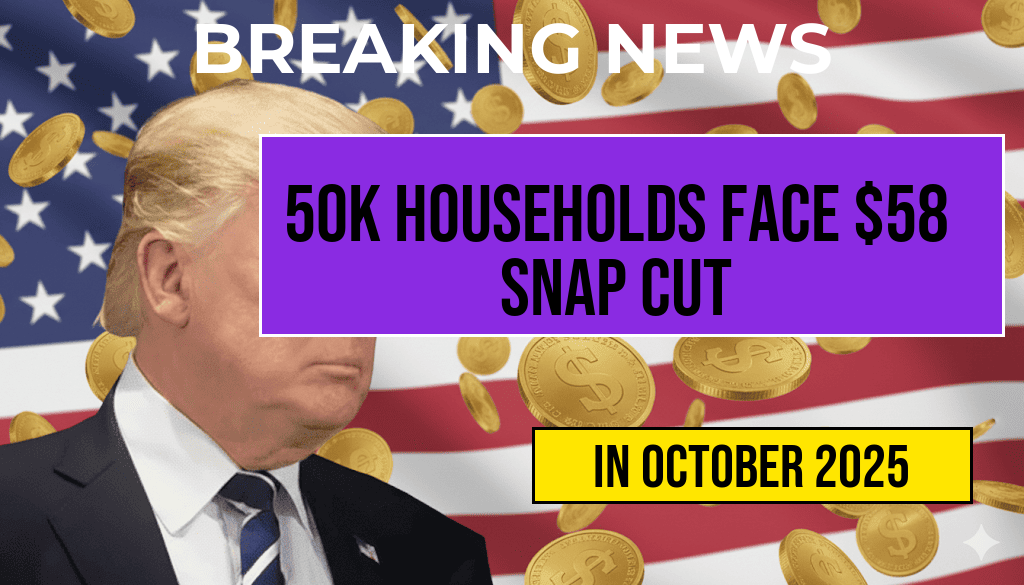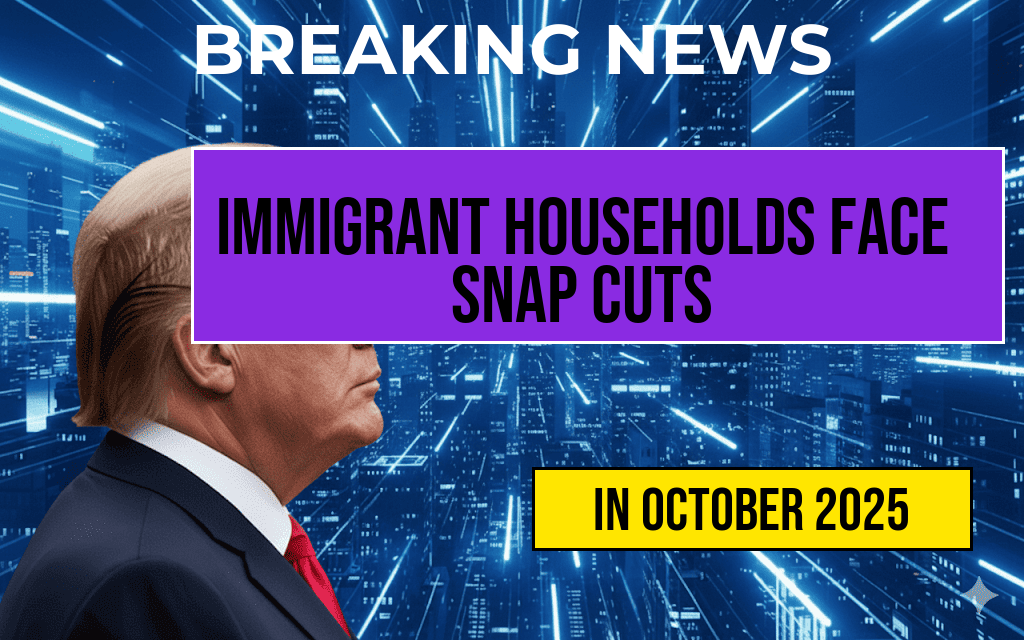Beginning this November, approximately 50,000 households across the United States will experience a significant reduction in their Supplemental Nutrition Assistance Program (SNAP) benefits, with an estimated $58 decrease in monthly assistance. This adjustment stems from federal policy changes linked to the end of pandemic-era emergency measures that temporarily boosted benefits. For many families, especially those already facing financial challenges, this reduction could intensify struggles to afford nutritious food. Experts warn that the cutbacks may lead to increased food insecurity and strain on local social services, as families adjust to tighter budgets amid ongoing economic uncertainties. This change marks a pivotal shift in federal food assistance policies, affecting vulnerable populations and sparking discussions on the adequacy of support systems in addressing poverty and hunger across the nation.
Background on SNAP and the Recent Policy Shift
The Supplemental Nutrition Assistance Program (SNAP) is the largest federal aid program aimed at combating food insecurity among low-income Americans. Administered by the U.S. Department of Agriculture (USDA), SNAP provides monthly benefits that help eligible households purchase nutritious food. Over recent years, SNAP benefits surged temporarily during the COVID-19 pandemic, as part of emergency measures designed to mitigate economic fallout.
With the official end of the public health emergency in May 2023, many of these temporary benefits are reverting to pre-pandemic levels. This transition, mandated by federal legislation, has resulted in a nationwide reduction of monthly SNAP allotments for millions of recipients. While some families experienced modest decreases before, the upcoming adjustment is expected to impact around 50,000 households specifically, with an average cut of approximately $58 per month, according to USDA estimates.
According to the USDA Food and Nutrition Service, these reductions are part of the broader effort to recalibrate benefits and ensure program sustainability as emergency measures wind down. However, critics argue that such cuts risk exacerbating food insecurity issues for already vulnerable populations.
Impacts on Affected Households
Who Will Be Affected?
- Approximately 50,000 households nationwide, primarily in regions where economic recovery has lagged.
- Recipients with fixed incomes, including seniors and persons with disabilities, who rely heavily on SNAP to meet daily nutritional needs.
- Families with children, especially those already living paycheck to paycheck.
Potential Challenges Faced
- Increased difficulty in purchasing balanced, nutritious meals.
- Greater reliance on local food banks and charitable organizations for support.
- Possible increases in food insecurity rates, as households adjust to lower benefits.
- Financial strain leading to difficult choices, such as prioritizing rent or utilities over food.
For many recipients, the $58 reduction may seem modest, but for families with tight budgets, even small decreases can have outsized effects on their ability to meet basic needs. According to recent research from the Urban Institute, reductions in SNAP benefits are correlated with increased food insecurity and adverse health outcomes among low-income populations.
Government Response and Policy Considerations
Officials’ Perspectives
Federal officials emphasize that the adjustments are necessary to ensure the long-term viability of SNAP amid changing economic conditions. USDA Secretary Tom Vilsack stated that the agency is committed to supporting vulnerable populations through other initiatives, including increased access to local food programs and nutrition education. However, critics argue that these reductions risk undoing progress made during the pandemic in alleviating hunger.
State-Level Variations
| State | Number of Households Affected | Average Monthly Reduction |
|---|---|---|
| California | 12,000 | $60 |
| Texas | 8,500 | $55 |
| Florida | 6,500 | $58 |
| Other States | 23,000 | $57 |
State agencies often provide supplementary programs to offset federal reductions, but these vary widely in scope and funding. Advocacy groups urge policymakers to consider measures like increased minimum wages and expanded social safety nets to mitigate the impact of benefit cuts.
Community and Nonprofit Responses
Local organizations and food banks are preparing for increased demand as households cope with reduced SNAP benefits. Many are ramping up outreach efforts and donations to support those hit hardest by the change. The Feeding America network reports that food insecurity has been steadily rising, and policy shifts such as these could accelerate the trend.
Some experts recommend that affected families prioritize accessing additional assistance programs, including Medicaid, housing support, and emergency grants, to buffer the financial strain caused by the SNAP reduction. Community-based approaches are seen as critical in addressing immediate nutritional needs while advocating for longer-term policy solutions.
Looking Ahead
The upcoming reduction in SNAP benefits underscores ongoing debates about the balance between fiscal responsibility and social support. As policymakers assess the long-term implications, many advocates call for a reevaluation of aid programs to ensure they adequately serve those most in need without compromising their sustainability. For now, the affected families face a period of adjustment, navigating the challenge of maintaining food security amid tighter budgets.
Frequently Asked Questions
What is the reason behind the SNAP reduction affecting fifty thousand households?
The SNAP reduction is primarily due to the expiration of emergency allotments and changes in federal funding, which will result in a $58 monthly decrease in benefits for affected households starting this November.
Which households are impacted by the SNAP benefit reduction?
The reduction will impact approximately fifty thousand households that currently receive SNAP benefits in the region, particularly those relying on the maximum benefit levels.
When will the SNAP benefit decrease take effect?
The benefit reduction is scheduled to begin in November, affecting recipients starting with their monthly benefits issued in that month.
How might this reduction affect households’ ability to purchase food?
The $58 monthly decrease in SNAP benefits may make it more challenging for households to afford their usual food expenses, potentially impacting their overall nutrition and food security.
Are there any programs or resources available to help households cope with the SNAP reduction?
Yes, households may explore local assistance programs, food banks, and community resources to supplement their food needs and mitigate the impact of the benefit reduction.






